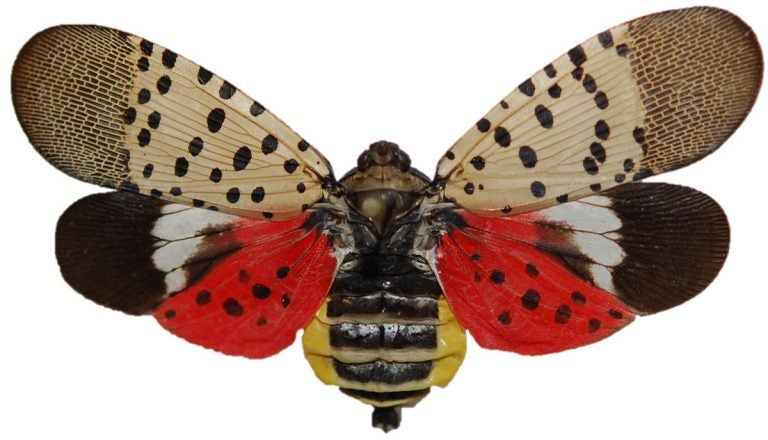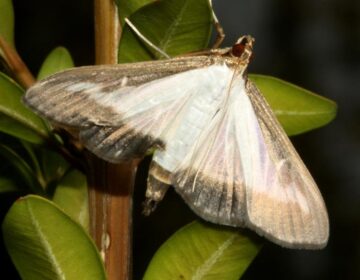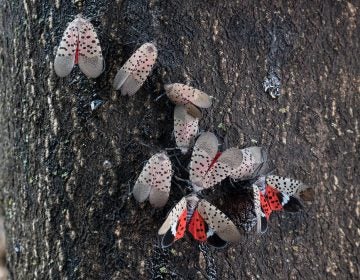Pa. acts to prevent invasive insects from spreading in Christmas tree shipments

The spotted lanternfly is the insect behind the Christmas tree quarantine. (Pennsylvania Department of Agriculture)
As spotted lanternflies from Southeast Asia reproduce quickly in Southeast Pennsylvania, officials are worried about the threat they pose to a variety of crops.
Since the invasive insect isn’t picky about the trees where where it lays its eggs, the state has placed Christmas tree growers in 13 counties — including Montgomery and Philadelphia — under quarantine to keep those eggs from traveling to other states. Pennsylvania Christmas trees are exported as far away as Maine, Florida, and Kansas City, said Fred Strathmeyer, a deputy secretary for the state’s Department of Agriculture.
The growers can still sell their trees, he said. But the quarantine means businesses must enter into compliance agreements with the department as inspectors teach growers how to search for lanternfly eggs and destroy them.
When the egg mass hatches around April or early May, the insects pose a threat to grapes, peaches and hardwood timber.
Strathmeyer said he hasn’t yet heard from any Christmas tree growers who’ve found evidence of the lanternflies or their eggs.
“The egg masses are in kind of a grayish, mud-looking sac, if you will,” he said. “It runs about maybe 2 and a half to 3 inches long, maybe about an inch wide or so. So that’s what you’re looking for on the trunk of the tree somewhere, potentially.”
If consumers happen to see an egg mass on a tree, he advised scraping it off and putting it in a bag with alcohol.
WHYY is your source for fact-based, in-depth journalism and information. As a nonprofit organization, we rely on financial support from readers like you. Please give today.




